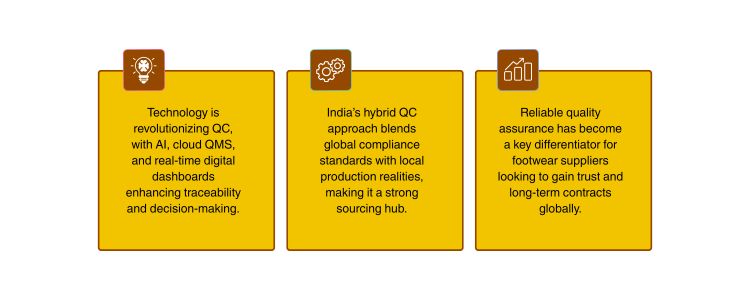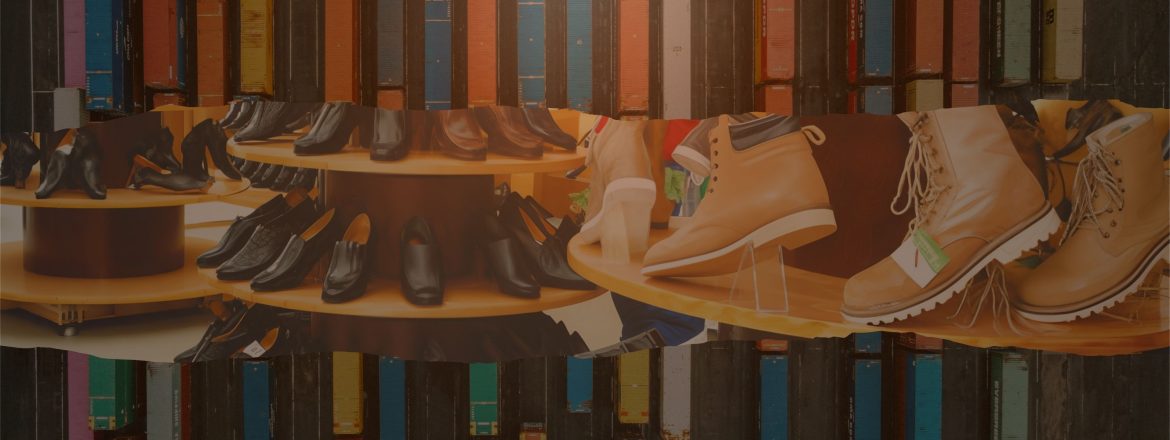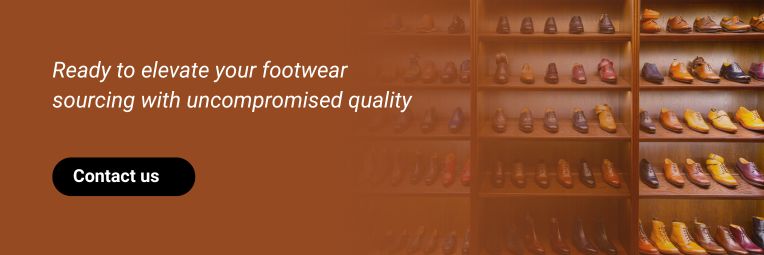How a Global Footwear Supplier Handles Quality Control
Introduction: Quality as a Strategic Imperative
Few categories in the hyper-competitive world of consumer goods exert as heavy of a pull on the standards of consistent quality assurance as footwear. Global suppliers are constantly held to the performance and quality expectations of business partners and customers alike, whether this is seasonal fashion shoes, performance athletic products, or something in between. For the leading footwear suppliers in the USA and the UK, the job doesn’t end at production; it includes the severity of the credibility of the product as it reaches the marketplace.
As consumer expectations, regulation and quality standards all continue an upward projection of importance, effectively managing quality control is no longer a reactive element of global sourcing. Quality needs to be at the forefront of every business process as a definitive piece of the global sourcing strategies of business that come from a variety of contexts.
The Multi-Layered Framework of Quality Control
A worldwide supplier of footwear typically follows a quality framework with three tiers: raw performance of materials, in-line inspections and assessments, and final audits. Each quality control section is documented, and many suppliers incorporate digital tracking that can assess factory production lines in real-time.

1. Material Testing and Pre-production Audits
Before any unit is stitched or assembled, raw materials go through testing. This includes tensile strength for upper fabrics, testing of slippers for abrasion, colour testing of dyed materials, etc. Suppliers with significant investments will either have their in-house labs to do this testing, or they will work with accredited testing agencies to the outlined international standards.
For a USA footwear supplier and their UK footwear supplier, the first step is fundamental to reducing risk throughout the supply chain. If raw materials arrive without full performance stocks – whole production batches can be scrapped at the end of the process.
2. In-Process Quality Control (IPQC)
IPQC promotes up-the-line quality during production when defective products can potentially be identified and corrected during production. Qualified times, which should be part of any supplier’s supply chain department, would carry out checks on durability protocols, performance assurance, stitching integrity, adhesive legibility if applicable, product assembly from manual, effects of weight to product and finish.
New integrated IPQC standards are predominantly Digital networked dashboards, all persons involved internally and externally that can access batch inspections will increase accountability and transparency throughout the producer and supplier alike.
3. Pre-Shipment Inspections and Compliance Audits
A statistical sample of the completed goods goes through a thorough assessment just before shipping. The Acceptable Quality Limit (AQL) process is often a common approach in this circumstance. The categorization of non-conformities typically focuses on critical, major, and minor defects or failures. The identification of any defects will normally call upon corrective action to be taken immediately with any further non-conformance.
This last mile, pre-export assessment is vital for exporters (especially when sourcing from Asia to global markets) to reduce the assessed risk of returns, reputational damage and loss of business.
Aligning Global Standards with Local Production Realities
One fundamental dilemma for footwear suppliers in the UK and their U.S. counterparts is consistency in a global and decentralized supply chain. While manufacturing plants in India, Vietnam, and Indonesia may be capable of producing excellent quality items, they may operate and craft differently. To address these inequalities, globally and less centrally, suppliers maintain quality regimes that are still regionally administered but globally outlined.
Regular training courses, standard operating procedures (SOPs), and in some cases, third-party audits are in place to ensure compliance. Several companies even employ quality engineers to be onsite during critical production runs, as they wanted to ensure numerous critical points of control were monitored, and that these could be delivered without disruption.
This tension and simultaneous need for localisation and standardisation is what differentiates mature suppliers from transactional ones.
Technology’s Role in Quality Assurance
The role of technology in quality assurance has transitioned from nice to have to required. AI-assisted inspection tools are now being piloted to find micro-level defects in stitching or sole adhesion. Drones and cameras can do 360-degree quality scans, which is beneficial for high-volume assembly lines.
Cloud-based quality management systems (QMS) enables real-time communication between factory floors and quality teams in corporate office dwellings in different parts of the world. These platforms not only eliminate latency in decision-making but also provide historical traceability in the course of a recall or customer complaint.
Suppliers who can offer these capabilities are quickly demonstrating a utility to global sourcing agents that want more than just acceptable price and compliance.
Why Footwear Sourcing from India Demands Stringent QC
India has a fast track as a capable footwear sourcing country with Agra, Chennai and Kanpur as clustered centres that offer scale and breadth in product variety. However, there are still inherent challenges around infrastructure, uniformity of raw materials, and excessive reliance on manual labour in production. When it comes to quality controls, this makes rigorous assessments non-disputable.
The best suppliers; mainly those catering to footwear suppliers in USA, build ‘hybrid’ quality control systems by leveraging expected compliance standards from the West and manufacturing realities in India. This hybrid system consists of bilingual SOPs, regular workshops on skill upgradation, and digital QC checklists for Indian factory floors.
When footwear sourcing from India is executed appropriately, not only are there competitive costs, there is also compliance, traceability and durability all of which are becoming factors of importance in Western consumer markets; and B2B retail supply chains.
Conclusion: Quality as a Market Differentiator
Quality control in footwear is no longer just a simple inspection task; it is a strategic differentiator as a supplier, which can make or break a supplier-client relationship. For footwear suppliers in the USA and footwear suppliers UK, much of the brand equity (value) of their label is often based on what happens out of sight, during the quality control phase.
In the current global sourcing landscape, wherein brand equity is independently associated with product integrity, investing in quality assurance systems that are thorough and tech-enabled is no longer an option or a best practice, it’s an obligation.









